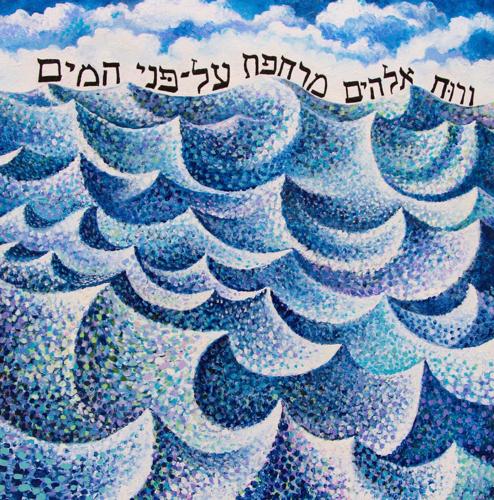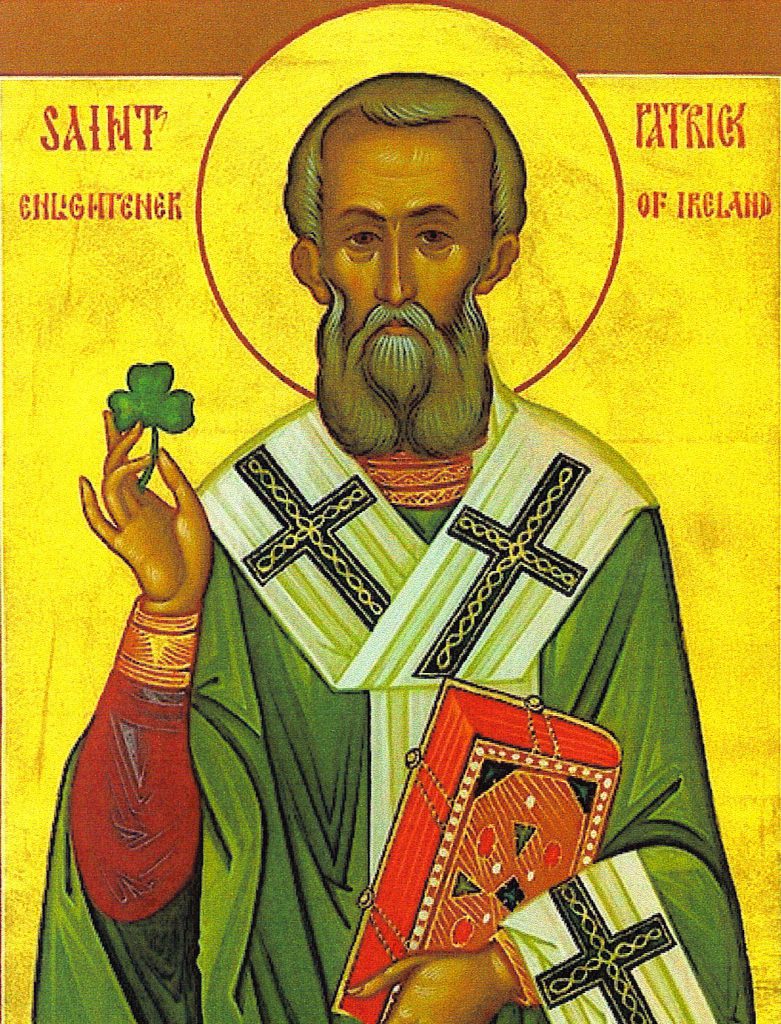 In our American date format, today is 3/14, which is also, as it happens, pi to the first two digits–making March 14 Pi Day! To refresh from high school geography, pi is the ratio between the circumference of a circle and its diameter–so, if you know the radius of a circle, you can use pi to calculate its circumference (2πr) or its area (πr squared: prompting the very bad pun, “No, pie are round; cornbread are square”). That ratio is, approximately, 3.14159–although mathematicians have now calculated its value out 62.8 trillion places with no repetition (here are the first million digits), making pi an irrational number.
In our American date format, today is 3/14, which is also, as it happens, pi to the first two digits–making March 14 Pi Day! To refresh from high school geography, pi is the ratio between the circumference of a circle and its diameter–so, if you know the radius of a circle, you can use pi to calculate its circumference (2πr) or its area (πr squared: prompting the very bad pun, “No, pie are round; cornbread are square”). That ratio is, approximately, 3.14159–although mathematicians have now calculated its value out 62.8 trillion places with no repetition (here are the first million digits), making pi an irrational number.
Mathematicians have used the Greek letter π to represent this value since 1706, when Welsh mathematician William Jones had the idea, although its use was popularized by the Swiss polymath Leonhard Euler. However, ancient people already knew that this value was just a bit larger than three:
The ancient Babylonians calculated the area of a circle by taking 3 times the square of its radius, which gave a value of pi = 3. One Babylonian tablet (ca. 1900–1680 BC) indicates a value of 3.125 for π, which is a closer approximation.
The Rhind Papyrus (ca.1650 BC) gives us insight into the mathematics of ancient Egypt. The Egyptians calculated the area of a circle by a formula that gave the approximate value of 3.1605 for π.
The first calculation of π was done by Archimedes of Syracuse (287–212 BC), one of the greatest mathematicians of the ancient world. Archimedes approximated the area of a circle by using the Pythagorean Theorem to find the areas of two regular polygons: the polygon inscribed within the circle and the polygon within which the circle was circumscribed. Since the actual area of the circle lies between the areas of the inscribed and circumscribed polygons, the areas of the polygons gave upper and lower bounds for the area of the circle. Archimedes knew that he had not found the value of π but only an approximation within those limits. In this way, Archimedes showed that π is between 3 1/7 and 3 10/71.
So, why is the Bible Guy going on and on about pi? As it happens, this ratio does pop up in the Bible–in the dimensions and volume given for the bronze sea.

The sea (2 Chr 4:2-5//1 Kgs 7:23-26) was a huge bronze basin of fresh water, placed in the temple forecourt to the south of the altar (2 Chr 4:10). It was supported on the backs of twelve bronze oxen, arranged so that three faced in each direction–symbolizing, perhaps, the twelve tribes of Israel. The NRSVue follows the KJV in calling this basin the “molten” sea (the Hebrew is mutsaq)– meaning that the sea was cast out of molten bronze, as opposed to being beaten with hammers out of a thin bronze sheet, which was the way bronze bowls and vessels were usually made (CEB has “a tank of cast metal”). The sheer size of the sea makes it unlikely that it was cast in one piece, however.
Chronicles and Kings give the same figures for the height, diameter, and circumference of the bronze sea: fifteen feet across, seven and a half feet high, and forty-five feet around. Given the dimensions of this circular vessel, the Israelites (like the Babylonians) put the value of pi at 3. However, the volume of the sea in Chronicles is three thousand baths, or 15,000 gallons: a thousand baths, or 5,000 gallons, more than that given in 1 Kings. While some scholars have proposed that the difference can be accounted for by different shapes imagined for the sea (a hemisphere in Kings, a cylinder in Chronicles), it is more likely either that Chronicles is exaggerating (as it is prone to doing!), or that the Chronicler’s standard measure of volume is different from that presumed by his source.
Certainly this was the case for the standard measure of length, the cubit. In Chronicles, the dimensions of the temple are given “in cubits of the old standard” (2 Chr 3:3, NRSVue). Evidently, the length of the cubit in the Chronicler’s time was not the same as it had been in Solomon’s. A likely explanation is that the Persians had imposed a new standard, different from Israel’s traditional units of measurement (for another indication of a longer, Persian-period cubit, see Ezek 40:5 and 43:13). For his readers to visualize Solomon’s temple properly, the Chronicler needs to remind them that Solomon used the old cubit, not the new Persian standard.
Chronicles goes on to describe briefly the ten smaller basins which accompanied the monumental sea (2 Chr 4:6//1 Kgs 7:38-39; the detailed description of the wheeled stands for the basins in 1 Kgs 7:27-37 does not appear in Chronicles). The purpose of both the basins and the sea, we are told, is for ritual cleansing: the smaller basins are for washing the sacrifices, while the sea is for the ablutions of the priests. However, as the lip of the basin would have been around ten feet off the ground, that seems unlikely. In the Talmud, the rabbis get around this problem by providing the sea with spigots, fashioned by the priestly craftsman Ben Kattin (see for example b. Yoma 25b)!

The bronze sea was far too big for any practical use. Much more likely is a symbolic function, indicated already by the name given to this huge bronze cauldron: the sea. In the ancient Near East, the sea was regarded as a symbol of the primordial chaos that ruled before the gods imposed order on the world. The authority of the creator god over the waters of chaos was emphasized in myth and poetry, and symbolized concretely by placing a large vessel of fresh water in the temple precincts. In Babylon, this vessel was called the apsu, or the waters of the abyss. As the waters of chaos beneath the earth were also considered the source of the earth’s fruitfulness, these temple vessels further symbolized the god’s control over fertility.
The LORD’s victory and supremacy over the waters of the sea is acclaimed throughout the Hebrew Bible, especially in the Psalms (see, for example, Psalms 24 and 46). Most likely, then, the sea represented the LORD’s victory over the waters of chaos, and–because of that victory–the LORD’s control over the life-giving waters of fertility.
AFTERWORD:

I would be seriously remiss if I did not also mention that Sunday is St. Patrick’s Day. For Patrick’s legend, I commend you to my blog post on the saint.
“St. Patrick’s Breastplate” is a classic expression of Celtic spirituality (perhaps best known from this familiar hymn), and a full-throated celebration of the Triune God. Here is the prayer in full, translated into English verse by Cecil Frances Alexander in 1889:
I arise today
Through a mighty strength, the invocation of the Trinity,
Through belief in the Threeness,
Through confession of the Oneness
of the Creator of creation.
I arise today
Through the strength of Christ’s birth with His baptism,
Through the strength of His crucifixion with His burial,
Through the strength of His resurrection with His ascension,
Through the strength of His descent for the judgment of doom.
I arise today
Through the strength of the love of cherubim,
In the obedience of angels,
In the service of archangels,
In the hope of resurrection to meet with reward,
In the prayers of patriarchs,
In the predictions of prophets,
In the preaching of apostles,
In the faith of confessors,
In the innocence of holy virgins,
In the deeds of righteous men.
I arise today, through
The strength of heaven,
The light of the sun,
The radiance of the moon,
The splendor of fire,
The speed of lightning,
The swiftness of wind,
The depth of the sea,
The stability of the earth,
The firmness of rock.
I arise today, through
God’s strength to pilot me,
God’s might to uphold me,
God’s wisdom to guide me,
God’s eye to look before me,
God’s ear to hear me,
God’s word to speak for me,
God’s hand to guard me,
God’s shield to protect me,
God’s host to save me
From snares of devils,
From temptation of vices,
From everyone who shall wish me ill,
afar and near.
I summon today
All these powers between me and those evils,
Against every cruel and merciless power
that may oppose my body and soul,
Against incantations of false prophets,
Against black laws of pagandom,
Against false laws of heretics,
Against craft of idolatry,
Against spells of witches and smiths and wizards,
Against every knowledge that corrupts man’s body and soul;
Christ to shield me today
Against poison, against burning,
Against drowning, against wounding,
So that there may come to me an abundance of reward.
Christ with me,
Christ before me,
Christ behind me,
Christ in me,
Christ beneath me,
Christ above me,
Christ on my right,
Christ on my left,
Christ when I lie down,
Christ when I sit down,
Christ when I arise,
Christ in the heart of every man who thinks of me,
Christ in the mouth of everyone who speaks of me,
Christ in every eye that sees me,
Christ in every ear that hears me.
I arise today
Through a mighty strength, the invocation of the Trinity,
Through belief in the Threeness,
Through confession of the Oneness
of the Creator of creation.
Beannachtai Na Feile Padraig Oraibh, friends–May the blessing of St. Patrick’s Day be upon you!